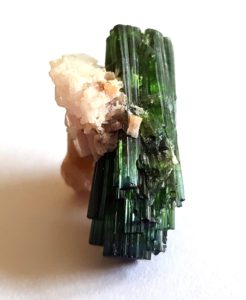Gemstones and gemmology
 I have a great love of all things gem related (Gemmology). I am constantly in awe of how gemstones are formed and sometimes find it difficult to believe how beautiful our Earth’s treasures are. Studying with the Gemmological Association of Great Britain has given me valuable insight and knowledge of gemstones which I believe is essential as a jewellery designer and silversmith.
I have a great love of all things gem related (Gemmology). I am constantly in awe of how gemstones are formed and sometimes find it difficult to believe how beautiful our Earth’s treasures are. Studying with the Gemmological Association of Great Britain has given me valuable insight and knowledge of gemstones which I believe is essential as a jewellery designer and silversmith.
Knowledge of the gemstone pipeline, ethical issues and market is a key part of being a gemmologist and my experience in assessing gemstones will continually improve with the more specimens I get to analyse. No one is safe wearing jewellery without me having a good gawp and appraisal!
If you have a gemstone in your collection that you would like me to help identify then please get in touch. I have testing instruments that identify the makeup of the stone.
Depending on the specimen I may be able to tell you the origin and geographical locality of the stone, whether it has been treated and if it is natural or synthetic.
I can also give you advice on how to care for your gemstone jewellery. Gemstones vary in durability due to their structural framework and are all susceptible to damage. How we care and store our gemstones will contribute to their beauty and longevity.
Did you know?…
- Emeralds are incredibly brittle and are cut in certain ways (“Emerald cut”) to lessen the chance of being chipped.
- Tanzanites are also brittle and should really only be worn as dress jewellery rather than every day.
- Tourmalines attract dust particles as they get warm.
- Opals can dehydrate and crack
- Pearls, Amber, Labradorite, Moonstones and Peridots should avoid contact with perfumes, hairspray and make-up.
- Amber is so soft that the surface can easily abrase.
- Diamonds can fracture if knocked in a certain way.
- Most gemstones fade if left in strong light.
Gemmology is the study of gem material from their origins to their use in jewellery and in ornamentation.
The Gemmological Association of Great Britain

